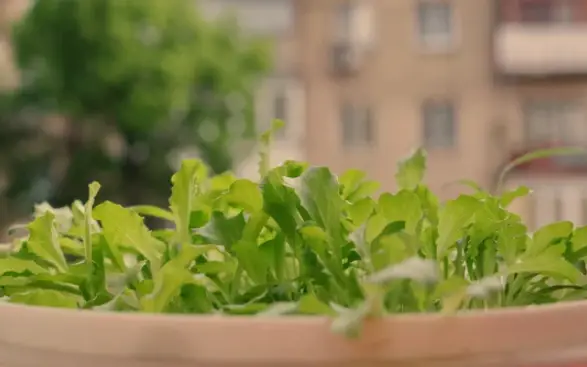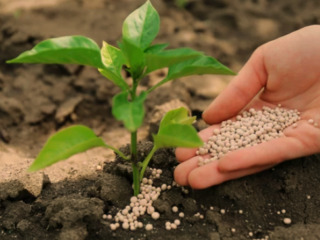Lettuce is a common ingredient in salads and a favorite among home growers because of its vivid colors and crisp texture.
Raising loose leaf lettuce is not only gratifying, but it’s also a useful method to eat healthy, fresh greens straight from your yard.
This thorough manual will arm you with all the knowledge and skills required to grow lush, flavorful loose leaf lettuce, whether you’re an expert gardener trying to improve your yield or a novice exploring the world of homegrown produce.
Loose Leaf Lettuce
Loose leaf lettuce, also known as leaf lettuce or cutting lettuce, is a type of lettuce that does not form a tight head like iceberg or romaine lettuce. Instead, it produces loose, tender leaves that can be harvested individually without uprooting the entire plant. This characteristic makes it an excellent choice for “cut and come again” harvesting, where you can continuously harvest the outer leaves while allowing the plant to keep growing and producing new foliage.

Loose Leaf Lettuce
Key Characteristics of Loose Leaf Lettuce:
- Leaf Structure: The leaves of loose leaf lettuce are loose and open, growing in a rosette form. They are usually more delicate and less crunchy compared to other lettuce varieties.
- Variety of Colors: Loose leaf lettuce comes in various colors, including green, red, bronze, and speckled varieties. The diverse palette of colors adds visual appeal to salads and other dishes.
- Nutritional Benefits: Like other lettuce types, loose leaf lettuce is low in calories and rich in essential nutrients such as vitamins A and K, folate, and antioxidants. It is a healthy addition to a balanced diet.
- Growing Habit: Loose leaf lettuce is fast-growing and has a relatively short maturity period. It can be grown in various climates and is suitable for both outdoor gardens and containers.
- Mild Flavor: The flavor of loose leaf lettuce is mild and slightly sweet, making it a versatile ingredient in salads, sandwiches, wraps, and other culinary creations.
Selecting the Perfect Location
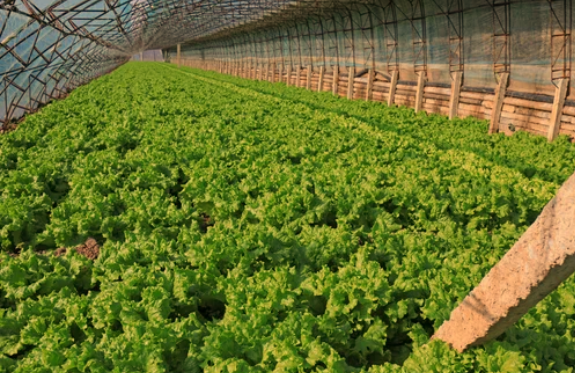
Selecting the perfect location is a critical step in successfully growing loose leaf lettuce. The right environment will ensure your lettuce plants receive adequate sunlight, proper air circulation, and protection from extreme weather conditions. Here are some factors to consider when choosing the ideal location for your lettuce patch:
- Sunlight: Loose leaf lettuce thrives in cool temperatures but still requires sufficient sunlight for healthy growth. Choose a location that receives at least 4-6 hours of direct sunlight each day. In hotter climates, consider providing some shade during the hottest part of the day to prevent the plants from bolting (prematurely producing flower stalks).
- Temperature: Lettuce is a cool-season crop and prefers temperatures between 45°F and 75°F (7°C to 24°C). It can tolerate light frosts, making it an excellent choice for early spring and late summer plantings. Avoid planting during the peak of summer when temperatures are consistently high.
- Wind Protection: Strong winds can damage lettuce leaves and dry out the soil quickly. Choose a location that offers some natural wind protection, such as near a fence, hedge, or other structures.
- Drainage: Ensure the chosen location has good soil drainage to prevent waterlogging, which can lead to root rot. Raised beds or slightly elevated planting areas can help improve drainage in areas with heavy soil.
- Proximity to Water Source: Having a water source nearby will make it easier to maintain consistent moisture levels in the soil, especially during dry periods.
- Avoiding Contaminants: Try to avoid planting lettuce near areas with potential contaminants, such as chemical runoff, as lettuce is sensitive to pollution.
- Convenience: Choose a location that is easily accessible for watering, weeding, and harvesting. Having your lettuce patch close to the kitchen can also encourage frequent use in culinary creations.
- Rotation and Companion Planting: If you practice crop rotation, avoid planting lettuce in the same spot where other leafy greens were grown in the previous season. Consider companion planting with herbs or other compatible vegetables to enhance pest control and promote healthy growth.
- Container Gardening: If space is limited, loose leaf lettuce can also be grown in containers. Choose large pots or planter boxes with good drainage and place them in a location that receives enough sunlight.
Preparing the Soil
Preparing the soil is a crucial step in successful loose leaf lettuce cultivation. Healthy, nutrient-rich soil provides the foundation for robust growth and ensures your lettuce plants have access to the essential elements they need to flourish. Here’s a step-by-step guide on how to prepare the soil for growing loose leaf lettuce:
- Clear the Area: Start by clearing the planting area of any weeds, rocks, and debris. Remove any existing vegetation to give your lettuce plants ample space to grow without competition.
- Loosen the Soil: Use a garden fork or a tiller to loosen the soil to a depth of about 6-8 inches. This process helps improve aeration, drainage, and root penetration.
- Soil Testing: Consider conducting a soil test to determine the soil’s pH and nutrient levels. Loose leaf lettuce prefers a slightly acidic to neutral soil pH, ideally between 6.0 and 7.0. The test results will help you identify any nutrient deficiencies that may need to be addressed with organic amendments.
- Amend the Soil: Based on the soil test results, add organic matter to the soil to improve its fertility. Compost, well-rotted manure, or leaf mold are excellent choices. Organic matter enhances soil structure, retains moisture, and provides essential nutrients for plant growth.
- Incorporate Organic Fertilizer: If the soil test indicates nutrient deficiencies, incorporate an organic, balanced fertilizer to address the specific needs of your lettuce plants. Follow the manufacturer’s instructions for the appropriate application rate.
- Mix and Rake: Thoroughly mix the organic matter and fertilizer into the soil using a rake or garden fork. Ensure the amendments are evenly distributed to provide a consistent nutrient supply for the lettuce plants.
- Level the Soil: Use the rake to level the soil surface. Avoid compacting the soil while leveling to maintain good soil structure for root development.
- Create Planting Rows or Beds: Depending on your preferred planting layout, create rows or raised beds with defined spacing to accommodate the lettuce plants. Leave enough space between rows to allow easy access for watering, weeding, and harvesting.
- Mulch (Optional): Applying a layer of organic mulch, such as straw or chopped leaves, can help retain soil moisture, suppress weed growth, and regulate soil temperature. Mulching also prevents the lettuce leaves from coming into direct contact with the soil, reducing the risk of soil-borne diseases.
- Prepare for Planting: If you are starting lettuce from seeds, create shallow furrows for planting the seeds. For transplants, dig holes to the appropriate depth for the seedlings.
Starting from Seeds: Sowing and Germination
Starting loose leaf lettuce from seeds is a rewarding way to grow this delicious leafy green in your garden. Sowing seeds allows you to select from a wide variety of lettuce cultivars and ensures you have a continuous supply of fresh leaves throughout the growing season. Here’s a step-by-step guide on sowing and germinating loose leaf lettuce seeds:
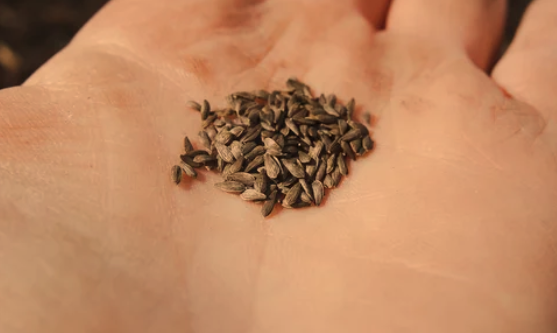
1. Choosing High-Quality Seeds: Select high-quality loose leaf lettuce seeds from reputable seed suppliers or garden centers. Look for fresh seeds with a high germination rate to ensure successful plant establishment.
2. Determine the Planting Time: Lettuce is a cool-season crop, so the ideal time to plant the seeds depends on your climate and the average last frost date in your region. In colder climates, you can start sowing seeds indoors in early spring and transplant them outdoors once the risk of frost has passed. In milder climates, you can sow seeds directly in the garden during early spring or late summer for a fall harvest.
3. Seed-Starting Containers: Use seed trays, small pots, or seed-starting cells to sow the lettuce seeds. Ensure the containers have drainage holes to prevent waterlogged soil.
4. Seed-Starting Mix: Fill the seed-starting containers with a high-quality seed-starting mix. This mix provides good aeration and drainage, which promotes healthy root development.
5. Sowing Seeds: Place 2-3 seeds about 1/4 inch deep in each cell or pot. Cover the seeds with a thin layer of seed-starting mix and gently press down to ensure good seed-to-soil contact.
6. Watering: Moisten the seed-starting mix with a gentle spray of water. Keep the soil consistently moist, but avoid overwatering, as excessive moisture can lead to damping-off disease.
7. Germination: Lettuce seeds typically germinate within 7 to 14 days, depending on the variety and environmental conditions. Keep the seed trays in a warm location with temperatures between 65°F to 75°F (18°C to 24°C) for best germination results.
8. Provide Light: Once the seeds have germinated and seedlings emerge, they require ample light to grow strong and healthy. Place the seed trays in a location that receives bright, indirect sunlight or use artificial grow lights to provide 12-16 hours of light daily.
9. Thin Seedlings (Optional): If multiple seeds have germinated in one cell or pot, thin the seedlings by snipping off the weaker ones, leaving only one strong seedling to grow in each cell or pot. This step ensures adequate space for each plant to develop fully.
10. Harden Off the Seedlings: Before transplanting the seedlings outdoors, gradually acclimate them to the outdoor conditions by placing them outside for a few hours each day over the course of a week. This process, known as “hardening off,” helps the seedlings adjust to temperature and environmental changes.
11. Transplanting Outdoors (Optional): If you started the seeds indoors, transplant the seedlings outdoors once they are 2-3 inches tall and have developed a few true leaves. Space the seedlings at least 6-12 inches apart to allow room for growth.
Transplanting Seedlings with Care
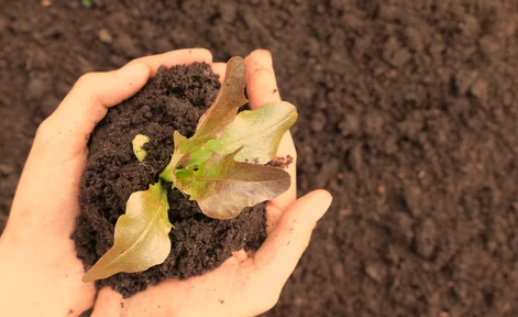
Transplanting seedlings is a crucial step in the journey of growing loose leaf lettuce. When seedlings outgrow their seed-starting containers or if you started them indoors, it’s time to move them to their permanent location outdoors. Transplanting should be done with care to minimize transplant shock and ensure the successful establishment of the young lettuce plants. Here’s a step-by-step guide to transplanting seedlings with care:
1. Choose the Right Time: Wait until the seedlings are 2-3 inches tall and have developed a few true leaves before transplanting them outdoors. This usually takes about 3-4 weeks after germination. Choose a mild, overcast day or transplant in the late afternoon to reduce stress on the young plants.
2. Harden Off Seedlings: Before transplanting, gradually acclimate the seedlings to outdoor conditions. Over the course of a week, expose the seedlings to increasing amounts of sunlight and outdoor temperatures for a few hours each day. This process, known as “hardening off,” helps the plants adjust to the different environmental conditions.
3. Prepare the Planting Area: Choose a well-prepared planting area with loose, fertile soil that has been enriched with organic matter. Ensure the soil is well-draining and free from weeds and debris.
4. Dig Planting Holes: Dig holes in the planting area, spacing them according to the recommended distance for the lettuce variety you are growing. The typical spacing for loose leaf lettuce is about 6-12 inches apart.
5. Transplant Seedlings: Gently remove the seedlings from their containers, taking care not to disturb the roots. You can use a small trowel or your fingers to carefully lift the seedlings from the seed tray.
6. Plant at the Right Depth: Place the seedlings into the prepared holes, making sure they are planted at the same depth as they were in their original containers. Fill the holes with soil and gently press down to secure the seedlings in place.
9. Provide Shade (Optional): If transplanting on a sunny day or during a heatwave, provide some temporary shade for the transplanted seedlings. You can use shade cloth or improvise with other materials to protect the plants from direct sunlight until they adjust to their new environment.
Watering Wisely
Watering wisely is essential for the successful growth of loose leaf lettuce. Proper watering ensures that the plants receive enough moisture to thrive without risking issues like root rot or other water-related problems. Here are some tips for watering your loose leaf lettuce plants effectively:
1. Observe the Soil Moisture: Check the soil moisture regularly by inserting your finger about an inch into the soil. If it feels dry, it’s time to water. Avoid letting the soil dry out completely, as this can stress the plants.
2. Watering Schedule: Loose leaf lettuce prefers consistent moisture, so it’s essential to establish a regular watering schedule. In most cases, providing water every 2-3 days should be sufficient, but adjust the frequency based on weather conditions and the moisture retention capabilities of your soil.
3. Watering Methods: Use a gentle watering method to prevent soil compaction and leaf damage. A soaker hose or drip irrigation system is ideal as they deliver water directly to the soil without wetting the leaves.
4. Water in the Morning: Watering in the early morning is recommended because the soil absorbs water more efficiently, and any excess moisture on the leaves will evaporate quickly, reducing the risk of fungal diseases.
5. Avoid Overhead Watering: Try to avoid overhead watering, especially later in the day, as wet leaves can be susceptible to diseases. If you must use sprinklers, do so in the morning to allow ample time for foliage to dry during the day.
6. Deep Watering: Water the soil deeply to encourage strong root growth. Shallow watering can lead to shallow root systems, making plants more vulnerable to heat stress.
7. Mulching: Applying a layer of organic mulch around the lettuce plants can help retain soil moisture, reduce evaporation, and prevent weed growth. Mulching also keeps the soil cooler, which is beneficial in hot climates.
8. Monitor Weather Conditions: Be aware of the weather forecast, particularly during hot and dry periods, as lettuce may require more frequent watering. Conversely, during rainy periods, you may need to reduce watering to avoid waterlogged soil.
9. Container Gardening: If growing lettuce in containers, monitor the moisture levels closely as containers tend to dry out faster than garden beds. Adjust your watering frequency as needed.
10. Watering Newly Transplanted Seedlings: After transplanting seedlings, water them well to settle the soil around the roots. Keep a close eye on their moisture needs in the first few days following transplanting.
Fertilizing for Optimal Growth
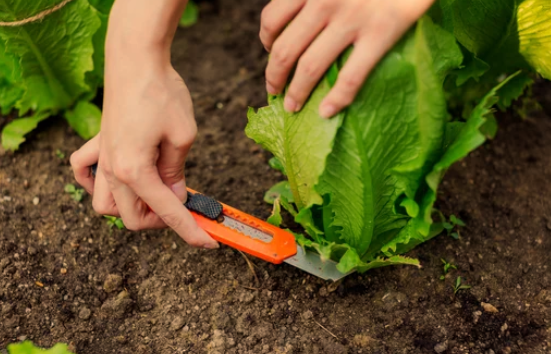
Fertilizing is an essential aspect of growing loose leaf lettuce to ensure optimal growth and a bountiful harvest of nutritious greens. Providing the right nutrients at the right time is crucial for promoting healthy plant development and robust foliage. Here are some tips for fertilizing your lettuce plants for optimal growth:
1. Soil Test: Before applying fertilizer, consider conducting a soil test to determine the nutrient levels in your soil. A soil test will help identify any deficiencies or imbalances, allowing you to tailor your fertilization plan accordingly.
2. Choose Organic Fertilizers: Organic fertilizers are preferable for growing lettuce as they release nutrients slowly and improve soil structure over time. Compost, well-rotted manure, and organic granular fertilizers are excellent choices.
3. Nitrogen-Rich Fertilizers: Lettuce requires a steady supply of nitrogen for leafy growth. Look for fertilizers with a higher nitrogen content relative to phosphorus and potassium (e.g., 10-5-5 NPK ratio).
4. Side-Dressing: Side-dressing is a technique where you apply fertilizer around the base of the plants during the growing season. It provides a supplemental dose of nutrients to support continuous growth. Use a small amount of fertilizer to avoid over-fertilizing, which can lead to excessive leaf growth at the expense of flavor.
5. Liquid Fertilizer: For container-grown lettuce or when rapid nutrient uptake is required, consider using liquid organic fertilizers. Dilute the fertilizer according to the manufacturer’s instructions and apply it as a foliar spray or directly to the soil around the plants.
6. Follow Recommended Rates: Always follow the recommended application rates provided on the fertilizer packaging. Over-fertilizing can lead to nutrient imbalances and may negatively affect plant health.
7. Avoid Fertilizing Young Seedlings: Young lettuce seedlings usually do not require fertilization during the first few weeks after germination. The initial nutrients from the seed-starting mix or compost should be sufficient for their early growth.
8. Timing of Fertilization: Apply fertilizer when the plants are actively growing and have a few true leaves. As lettuce has a relatively short growing period, it’s best to provide nutrients during its main growth phase.
9. Water After Fertilizing: After applying fertilizer, water the plants thoroughly. This helps dissolve the nutrients and ensures they reach the root zone where they can be absorbed by the lettuce plants.
10. Avoid Fertilizing Before Harvest: Stop fertilizing about two weeks before you plan to harvest the lettuce. This reduces the risk of excessive nitrate accumulation in the leaves, which can affect the flavor and quality of the greens.
Protecting Your Lettuce: Pest and Disease Management
Protecting your lettuce from pests and diseases is essential to ensure a healthy and productive crop. Lettuce can be vulnerable to various pests and diseases, but with proper prevention and early intervention, you can keep your plants thriving. Here are some effective pest and disease management strategies for your loose leaf lettuce:
1. Preventive Measures:
- Choose disease-resistant lettuce varieties whenever possible.
- Practice crop rotation, avoiding planting lettuce in the same spot where other leafy greens were grown the previous year.
- Keep the garden clean by removing debris and plant residues that may harbor pests and diseases.
- Avoid overwatering, as excessively moist conditions can encourage fungal diseases.
2. Inspect Regularly:
- Regularly inspect your lettuce plants for signs of pests and diseases. Look for chewed leaves, wilting, discoloration, or any unusual growth patterns.
3. Handpick Pests:
- If you spot pests like aphids or caterpillars, consider handpicking them off the plants. Wearing gloves can protect your hands while doing this.
4. Use Organic Pest Control:
- Introduce natural predators like ladybugs, lacewings, or parasitic wasps, which feed on pests like aphids and caterpillars.
- Use neem oil or insecticidal soap to control soft-bodied pests while minimizing harm to beneficial insects.
5. Companion Planting:
- Plant companion herbs and flowers like dill, cilantro, marigolds, and nasturtiums to deter pests and attract beneficial insects.
6. Physical Barriers:
- Use row covers or insect netting to physically block pests from reaching your lettuce plants.
7. Organic Sprays:
- Create homemade organic sprays using ingredients like garlic, chili pepper, or soap to deter pests naturally.
8. Disease Management:
- If you notice signs of disease, remove and dispose of infected plants promptly to prevent further spread.
- Avoid working with your lettuce plants when they are wet, as this can help reduce the spread of diseases.
9. Proper Watering:
- Water the soil, not the foliage, to reduce the likelihood of fungal diseases.
- Water in the morning, so the leaves have time to dry during the day.
10. Sanitize Tools:
- Regularly clean and sanitize your gardening tools to avoid spreading diseases from one plant to another.
Thinning Lettuce Seedlings
Thinning lettuce seedlings is an essential step in the growing process to ensure proper spacing and healthy growth of the remaining plants. Thinning involves removing some of the seedlings to provide adequate room for the selected plants to develop fully. Here’s a step-by-step guide on how to thin lettuce seedlings effectively:
1. Wait for the Right Time: Allow the lettuce seedlings to grow for a few weeks after germination before thinning. Wait until they have developed at least two true leaves, which are the leaves that grow after the initial cotyledon leaves.
2. Choose the Strongest Seedlings: Select the healthiest and strongest seedlings to keep. Look for seedlings that have good color, sturdy stems, and vigorous growth.
3. Prepare the Area: Before thinning, water the soil thoroughly to make it easier to remove the seedlings. This helps prevent disturbing the roots of the chosen plants during the thinning process.
4. Identify Spacing: Check the recommended spacing for the lettuce variety you are growing. Typically, loose leaf lettuce should be spaced about 6 to 12 inches apart, depending on the specific variety and its mature size.
5. Gently Remove Excess Seedlings: To thin the seedlings, gently grasp the unwanted seedlings near the soil line between your thumb and forefinger. Carefully pull or snip them off at ground level. Be cautious not to disturb the root systems of the remaining seedlings.
6. Avoid Pulling Seedlings: Avoid pulling out excess seedlings from the soil, as this may disturb the root system of nearby healthy plants. Cutting or snipping the unwanted seedlings is a more controlled method.
7. Space Seedlings Evenly: Ensure the remaining seedlings are evenly spaced according to the recommended guidelines. Proper spacing allows each plant to have enough access to sunlight, nutrients, and space to grow without competition.
8. Water After Thinning: Water the seedlings immediately after thinning to help settle the soil around the remaining plants and reduce transplant shock.
9. Dispose of Thinned Seedlings: Dispose of the thinned seedlings properly. You can add them to your compost pile or discard them as yard waste.
10. Monitor and Maintain: Monitor the remaining seedlings regularly and continue to care for them with proper watering, fertilization, and pest management as needed.
Harvesting Techniques
Harvesting lettuce is an exciting part of growing loose leaf lettuce, as you get to enjoy the delicious, fresh greens you’ve nurtured. Proper harvesting techniques are essential to ensure you get the most out of your lettuce plants and encourage continuous growth. Here are some harvesting techniques for loose leaf lettuce:
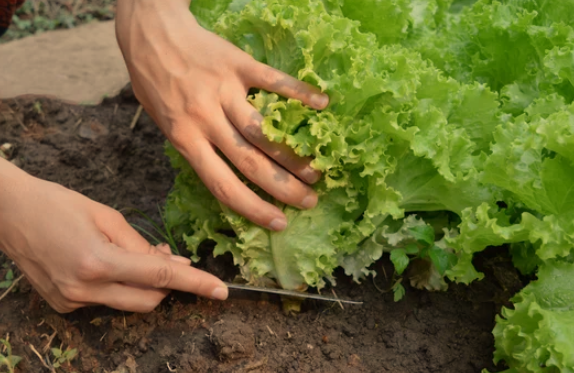
1. Harvesting Individual Leaves:
- Loose leaf lettuce is commonly harvested by picking individual leaves from the outer part of the plant. This method is known as “cut-and-come-again” harvesting.
- Wait until the leaves are at least 4 to 6 inches long before harvesting. Using a sharp pair of scissors or garden shears, cut the outer leaves close to the base of the plant. Leave the inner leaves to continue growing.
- By harvesting the outer leaves, the plant will continue to produce new leaves from the center, allowing for multiple harvests throughout the growing season.
2. Harvesting Entire Plants:
- If you prefer to harvest the whole plant at once, wait until it reaches the desired size. Loose leaf lettuce is generally ready to harvest in about 6 to 8 weeks after planting.
- Use a sharp knife to cut the entire plant at the soil level. After harvesting, prepare and store the lettuce leaves properly to maintain freshness.
3. Harvesting in the Morning:
- For the best flavor and crispness, harvest lettuce in the early morning when the leaves are at their juiciest.
- Morning harvesting also helps prevent wilting, as lettuce leaves tend to be turgid after absorbing water throughout the night.
4. Avoid Harvesting in the Heat of the Day:
- Avoid harvesting lettuce during the heat of the day, as the leaves can become wilted and limp due to water loss.
- If you must harvest in warm conditions, place the harvested leaves in a container with cool water for a few minutes to rehydrate them.
5. Regular Harvesting:
- Harvest lettuce regularly to encourage continuous growth and to prevent plants from bolting (producing flower stalks).
- Frequent harvesting also helps prevent the leaves from becoming too mature and bitter.
6. Storage and Handling:
- After harvesting, store the lettuce leaves in the refrigerator. Wash them gently to remove any dirt or debris before refrigerating.
- Use a plastic bag or airtight container with a slightly damp paper towel to keep the leaves crisp and fresh for longer.
7. Harvesting in Cool Weather:
- In hot climates, consider planting lettuce for a fall or winter harvest, as cooler temperatures promote sweeter and crisper leaves.
Frequently Asked Questions (FAQs) About Growing Loose Leaf Lettuce
What is loose leaf lettuce, and how is it different from other lettuce varieties?
Loose leaf lettuce, also known as leaf lettuce, is a type of lettuce that does not form a head like iceberg or romaine lettuce. Instead, it grows loose, tender leaves that can be harvested individually. The main difference lies in the leaf structure, making loose leaf lettuce more suitable for cut-and-come-again harvesting.
Can I grow loose leaf lettuce indoors?
Yes, you can successfully grow loose leaf lettuce indoors. Choose a sunny windowsill or use grow lights to provide sufficient light for the plants. Ensure good air circulation and avoid overwatering to prevent mold and mildew issues.
What are the best varieties of loose leaf lettuce to grow?
There are several delicious varieties of loose leaf lettuce to choose from, such as green leaf, red leaf, oak leaf, and butterhead. Consider your taste preferences and climate when selecting the best variety for your garden.
When is the best time to plant loose leaf lettuce?
Loose leaf lettuce prefers cooler temperatures and can tolerate light frosts. In most regions, you can plant lettuce in early spring or late summer to enjoy a bountiful harvest. However, in mild climates, you may be able to grow it year-round.
How much sunlight does loose leaf lettuce need?
Loose leaf lettuce thrives in partial shade to prevent it from bolting (producing a flower stalk). Aim for at least 4-6 hours of direct sunlight per day, but avoid intense afternoon sun in hotter climates.
What type of soil is best for growing loose leaf lettuce?
Loose leaf lettuce prefers well-draining, fertile soil. Amend your soil with compost or well-rotted manure to provide essential nutrients. A soil pH between 6.0 and 7.0 is ideal for optimal growth.
How often should I water my loose leaf lettuce?
Water your lettuce regularly to maintain consistent moisture levels in the soil. Avoid waterlogging, as it can lead to root rot. Using a soaker hose or drip irrigation will help keep the foliage dry and reduce the risk of diseases.
Can I grow loose leaf lettuce in containers?
Yes, loose leaf lettuce is well-suited for container gardening. Use a pot with good drainage and a high-quality potting mix. Choose compact or dwarf varieties for smaller containers and ensure they receive enough sunlight.
How do I prevent pests and diseases from affecting my lettuce plants?
To prevent pests, such as aphids and slugs, introduce natural predators like ladybugs or use organic pest control methods. Practice good garden hygiene to reduce the risk of diseases and avoid planting lettuce near crops that are prone to the same pests and diseases.
When and how do I harvest loose leaf lettuce?
You can start harvesting loose leaf lettuce when the leaves reach about 4-6 inches in length. Either snip off individual outer leaves at the base or use the cut-and-come-again method to allow continuous regrowth.
Reference
The Old Farmer’s Almanac: https://www.almanac.com/
Conclusion
By now, you should feel well-equipped to embark on your lettuce-growing journey. Whether you have a vast backyard or a small balcony, cultivating loose-leaf lettuce can be a gratifying experience.
Remember to start with the right variety, create a conducive growing environment, and provide the necessary care for your plants to flourish.
As you nurture your lettuce garden, you’ll not only enjoy a bountiful harvest of fresh, flavorful greens but also develop a deeper connection with nature and the joy of growing your food.

